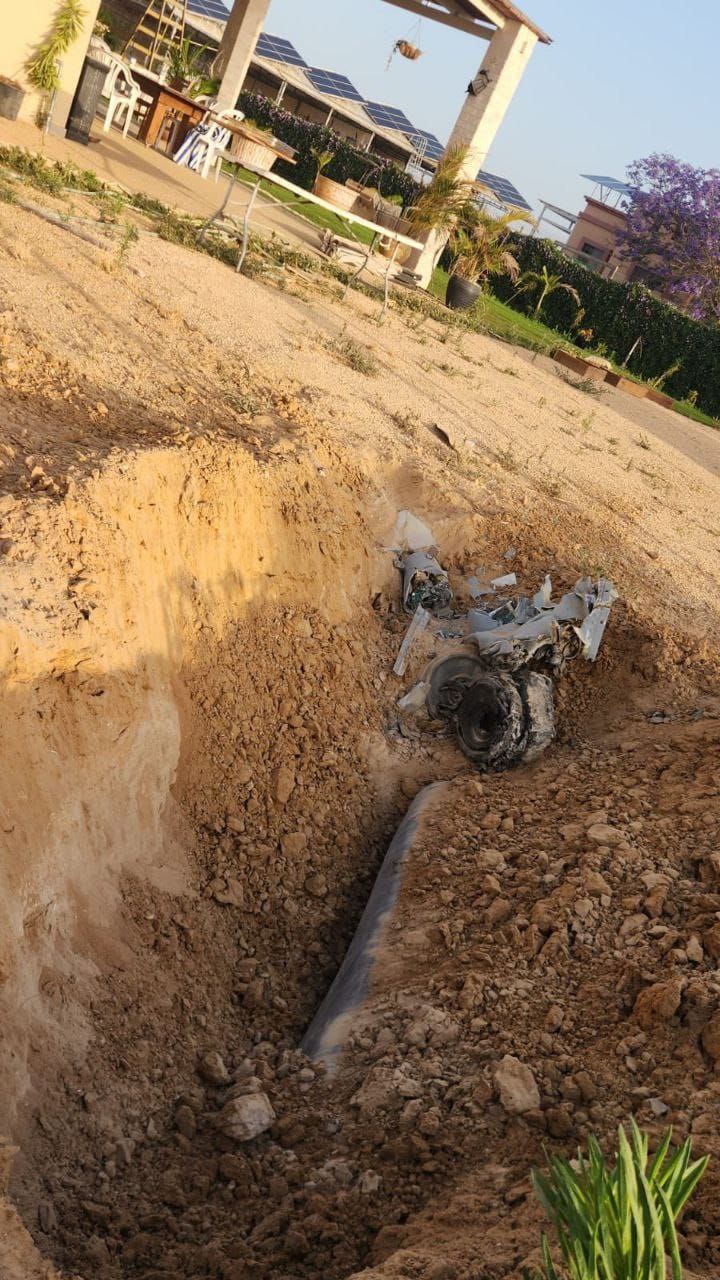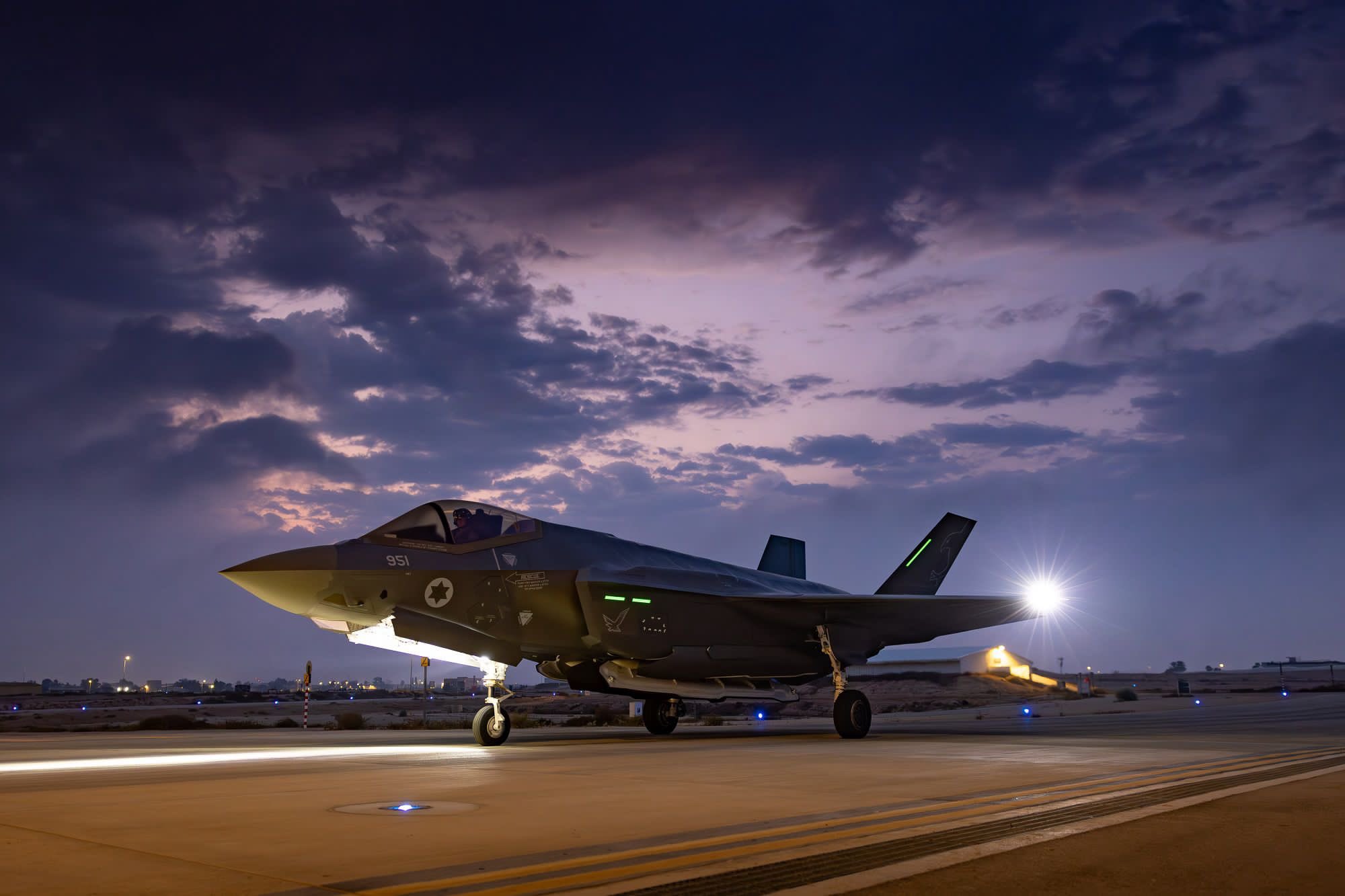Days after it unleashed a new wave of intense bombardment of Gaza, the Israeli Air Force (IAF) made a massive blunder when a combat aircraft ‘dropped’ one of the bombs meant for Gaza on its territory. The bomb, however, did not explode.
According to authorities, an unexploded Israeli Air Force bomb was discovered on May 17 in Yated village, near the Gaza border. The bomb appears to have fallen off of a fighter jet during operations over Rafah.
The authorities did not specify the type of bomb or the fighter jet that may have dropped it. However, the photos of the fallen munition reveal that it was close to residential areas and may have jeopardized the safety of the locals had it exploded. It would have caused substantial human and material losses to the Israeli settlement.
“The ordinance did not explode. This is an unusual event, the circumstances of which will be examined in depth,” the Israel Defense Force (IDF) said in a statement. Soon after the munition was spotted, an Air Force engineering team was dispatched to the location which instantly began an in-depth investigation of the incident.
The IDF said, “The investigation will be presented to the commander of the Air Force. The fallen ordinance is now being collected by IDF forces and will be evacuated later. The public is asked to stay away from the area until the end of the security forces’ activities.”
According to reports, the authorities are considering evacuating citizens from the area. EurAsian Times could not independently confirm this information.
The incident was reported soon after the IDF launched a new wave of attacks across the Gaza Strip. According to the Palestinian Health Ministry, there have been at least 180 Palestinian deaths and numerous injuries as a result of airstrikes in the last week.

These airstrikes have coincided with incursions into eastern Rafah, the Zeitoun neighborhood of Gaza City, and Jabalia in the north of the country.
Earlier this month, a new controversy broke out as Israel’s closest ally, the United States, announced that it had stopped sending bombs to Israel amid concerns that a significant ground operation in the southern Gaza city of Rafah was continuing. US officials said that the consignment that was held back consisted of 2,000-pound bombs.
Reports suggested that the decision to stop the supply of what were probably MK-84s, which is a 2,000-pound/900-kilogram American general-purpose bomb, coincides with Israeli Prime Minister Binyamin Netanyahu’s increasing resolve to carry out a deadly ground offensive in Rafah in defiance of US warnings.
Speaking to CNN, Joe Biden said, “Civilians have been killed in Gaza as a consequence of those bombs and other ways in which they go after population centers. I made it clear that if they go into Rafah … I’m not supplying the weapons that have been used historically to deal with Rafah, to deal with the cities.”
However, the US warnings over the months have remained unheard and are seen as lacking any substance. The US vetoed the ceasefire called by the United Nations on multiple occasions. Also, the stern warnings issued by Washington have not affected Israel’s military operations that have gone over and beyond Gaza.
On May 18, for example, the Israeli military said a fighter jet carried out a strike in Jenin in the West Bank.
The IDF said the targeted site was “a dangerous terrorist infrastructure” and that the airstrike “was carried out to remove an imminent threat posed by terrorists involved in preparing terrorist attacks in the Jenin area and on Israeli territory.”
Israel has come under attack by another militia active in the region: the Hezbollah. It has dealt a significant blow to the IDF in recent attacks.

Hezbollah’s Attacks On Israel
The Lebanon-based militant group Hezbollah used a drone to launch two missiles against a military position in northern Israel this week, injuring three troops, one of them critically.
While Hezbollah has been firing missiles across Israel’s border regularly for the previous seven months, the missile strike on May 16 appears to be the group’s first successful attempt to do so inside Israeli territory.
On that day, Hezbollah launched three anti-tank guided missiles at an Israeli military post that controlled a surveillance balloon flying over the border in Tal Shamaim near the Golani junction. Some reports on social media claimed that the big spy balloon and its control room equipment cost millions of dollars. The targeted surveillance balloon was intended to be used as a warning tool for the Israeli Air Force.
Hezbollah declared that its Resistance fighters had attacked the Israeli Ilaniya facility west of Tabarayya from the air, employing multiple kamikaze drones to destroy a portion of the Israeli Air Force’s extensive observation and detection system.
In a statement, Hezbollah claimed that after tracing the “spy” balloon’s movement and locating it over time, its fighters targeted and managed to destroy the balloon.
Since Israel’s foray into the southern Gaza Strip city of Rafah, Hezbollah has increased the intensity of its strikes since mid-April. It has deployed new and more sophisticated weaponry to strike farther into the Israeli territory.
That said, concerns have since been expressed inside the Israeli military over Hezbollah’s employment of increasingly sophisticated weaponry, such as guided missiles known as Almas, or Diamond, which were used to assault the base in charge of the balloon, explosive drones, and drones with missile propulsion capabilities.
“Hezbollah has been escalating the situation in the north,” said military spokesman Lt. Col. Nadav Shoshani. “They’ve been firing more and more.”
- Contact the author at sakshi.tiwari9555 (at) gmail.com
- Follow EurAsian Times on Google News




